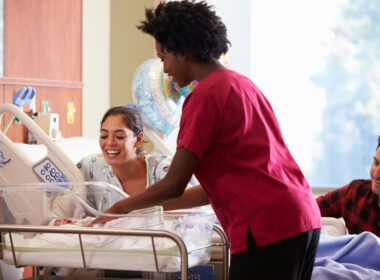One of the first things my mom told me when she gave me the scoop on feminine cycles is that taking a walk can help ease menstrual cramps. She didn’t explain why, but I quickly learned she was right. A few years later, I was traveling to a family vacation and sat in a car for the majority of the day I got my period. The cramps I experienced the next day are still the worst I’ve ever experienced.
Cardio for the Win
Admittedly, much of the research done on exercise and PMS has been low quality. This doesn’t mean that exercise doesn’t improve PMS symptoms, but it does mean that more and better research is needed to determine whether a specific amount of a specific exercise for a specific length of time makes the biggest difference, or whether every woman has different needs.
Research does suggest that aerobic exercise (that is, movement that uses oxygen as part of the energy cycle, also known as “cardio”) can ease more than cramps in the days leading up to your period. A few examples of aerobic exercise include walking, running, swimming, kickboxing. A 2013 study in Iran compared the effects of aerobic exercise on the physical and psychological PMS symptoms of female non-athletes. After just four weeks of three one-hour workout sessions, the subjects who were working out reported a reduction of symptoms, and at eight weeks, even more so. A 2015 study from Iran (conducted by different researchers than the 2013 study) also encouraged specifically aerobic exercise compared to anaerobic exercise like strength training.
The authors of the 2013 study suggest that common physical symptoms of PMS—headaches, breast pain, swelling, and weight gain—could be related to “increased aldosterone in serum, prostaglandin E2, and deficiency of vitamin B and [magnesium].” Aerobic exercise seems to mitigate the fluctuations in these hormones and nutrients, as well as those of estrogen, progesterone, and more, and thus decrease the severity of the symptoms.
Looking for specifics on how much and what kind of exercise is best? The authors of this 2022 literature review suggest “performing 30 minutes of aerobic exercise, 3–5 sessions per week for about 10 weeks, has potential benefits in improving premenstrual symptoms of women in reproductive age.”
Mood Mitigation
Some studies have found that both aerobic and anaerobic exercise can reduce PMS symptoms, but it seems that aerobic exercise (e.g. swimming, walking, running, cycling, or using an elliptical) has a more significant effect on mood-related symptoms, such as depression. In addition to the chemical effects, psychologically, exercise can help to eliminate negative intrusive thoughts and cognitive impairment and to increase positive thoughts. When physical exercise works to boost confidence and facilitate community and relationships, women may also see a reduction in stress and anxiety.
Find What Works for You
Exercise can prove beneficial for PMS symptoms, but not necessarily as a quick fix. In order to get the greatest benefit from exercise, aim to make it part of your lifestyle all month long, not just in the days or week leading up to your period. For every woman, that will look a little different. Maybe you need to find an accountability partner to help you stick to a workout schedule. Maybe it’s best for you to exercise after work, rather than in the morning. Or maybe you need to try a few different YouTube channels before you find a fitness instructor that motivates and encourages you. Perhaps cycle syncing will be your ticket to creating an exercise habit.
If you’re getting into a new fitness routine, start slow and be mindful of the changes in muscle movement that you may experience during your period. You don’t need to run a marathon or place on the Crossfit leaderboard to experience the benefits of working out. Something is always better than nothing, and doing something you enjoy is key to making a lasting lifestyle change. Be encouraged by this 2023 study, which found that high school girls who had physical education (PE) class just twice a week reported fewer PMS symptoms than their female classmates who did not. Some research also suggests a benefit of abdominal massage combined with exercise to reduce dysmenorrhea or period pain, including cramping.
While aerobic exercise may give you the most bang for your buck, don’t neglect strengthening movements and stretching. A well-rounded workout routine can lower blood pressure, help maintain a healthy weight, and increase bone density—all good news for your overall health. The American College of Obstetrics and Gynecology recommends, “at least 30 minutes of exercise most days of the week.”
See the Proof
If you’re charting your cycle with a Fertility Awareness-Based Method (FABM), you will likely notice changes in your charts when regular, moderate exercise becomes part of your lifestyle. It’s possible you’ll see improvements in symptoms of polycystic ovary syndrome (PCOS), irregular cycles, and more. What’s more, you’ll likely feel better, and won’t have to worry so much about PMS interfering with social or professional responsibilities. Whether it’s at the gym, around the block, or in your living room, the time you spend moving your body will be time well spent.
This article was updated on October 19th, 2023, to include additional and newer research links.







